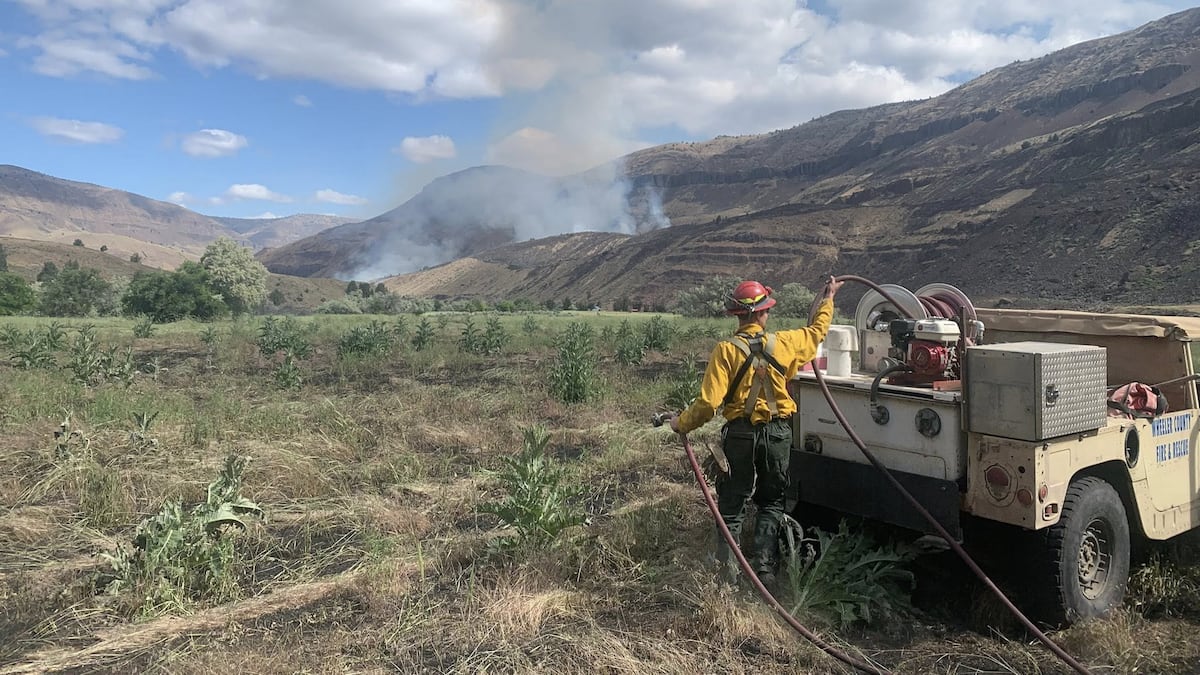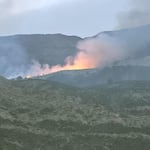Oregon
Unemployment benefits for striking workers being considered in Oregon, Washington

Lawmakers in Oregon and Washington are considering whether striking workers should receive unemployment benefits, following recent walkouts by Boeing factory workers, hospital nurses and teachers in the Pacific Northwest that highlighted a new era of American labor activism.
Oregon’s measure would make it the first state to provide pay for picketing public employees — who aren’t allowed to strike in most states, let alone receive benefits for it. Washington’s would pay striking private sector workers for up to 12 weeks, starting after at least two weeks on the line.
“The bottom line is this helps level the playing field,” said Democratic state Sen. Marcus Riccelli, who sponsored Washington’s bill. “Without a social safety net during a strike, workers are faced with tremendous pressure to end the strike quickly or never go on strike in the first place.”
But the bills are raising questions about how they would affect employers, especially amid economic uncertainties tied to federal funding cuts and tariffs imposed by President Donald Trump.
“It’s inappropriate to unbalance the bargaining table in a way that forces employers to pay for the costs of a striking worker,” Lindsey Hueer, government affairs director with the Association of Washington Business, told senators during a committee hearing in February. “Unemployment insurance should be a safety net for workers who have no job to return to.”
So far only two states, New York and New Jersey, give striking workers unemployment benefits. Senate Democrats in Connecticut have revived legislation that would provide financial help for striking workers after the governor vetoed a similar measure last year.
Benefits bills advance but face opposition
The measures in Washington and Oregon have been passed by the state Senate of each and are now in the House. The Washington bill faces its final committee hearings on Friday and Monday.
The Economic Policy Institute, a nonprofit, pro-labor think tank in Washington, D.C., has studied the effects of giving unemployment benefits to striking workers and found it to be good for workers and employers alike, said Daniel Perez, state economic analyst for the organization.
First, he said, lengthy strikes are extremely rare. More than half of U.S. labor strikes end within two days — workers wouldn’t receive pay in those cases — and just 14% last more than two weeks. Second, the policy costs very little — less than 1% of unemployment insurance expenditures in every state that has considered legislation.
Bryan Corliss, spokesperson for the Society of Professional Engineering Employees in Aerospace union, told The Associated Press that the big winners would be low-wage workers.
“If low-wage workers had the financial stability to actually go on strike for more than a day or two without risking eviction, we believe that would incentivize companies to actually come to the table and make a deal,” he said.
During a hearing in the Washington House labor committee last week, several Republican lawmakers tried to amend the bill to require striking workers to look for other jobs or to shorten the time covered from 12 weeks to four. The Democratic majority shot those ideas down.
Republican Rep. Suzanne Schmidt said the bill might be good for workers, but it would hurt employers.
“We’ve seen instances of this with the Boeing strike last year for the machinists,” she said. “We had 32,000 people on strike at the same time and if this had been in play it would have cost millions of dollars to cover those workers. Boeing did actually lose billions having the workers on strike for several months.”
The Oregon bill, which also would make striking workers eligible for unemployment benefits after two weeks, sparked a similar debate, both among Democratic and Republican lawmakers as well as constituents, with hundreds of people submitting written testimony.
The state has seen two large strikes in recent years: Thousands of nurses and dozens of doctors at Providence’s eight Oregon hospitals were on strike for six weeks earlier this year, while a 2023 walkout of Portland Public Schools teachers shuttered schools for over three weeks in the state’s largest district.
The Oregon Senate passed the measure largely along party lines, with two Democrats voting against it.
On the Senate floor, Democratic Sen. Janeen Sollman said she worried about the effect on public employers such as school districts, which “do not have access to extra pots of money.” Private employers pay into the state’s unemployment trust fund through a payroll tax, but few public employers do, meaning that they would have to reimburse the fund for any payments made to their workers.
Democratic Sen. Chris Gorsek, who supported the bill, argued it wouldn’t cost public employers more than what they’ve already budgeted for salaries, as workers aren’t paid when they’re on strike. Also, those receiving unemployment benefits get at most 65% of their weekly pay, and benefit amounts are capped, according to a document presented to lawmakers by employment department officials.
“Unemployment insurance is partial wage replacement, so unemployment insurance in and of itself is not an additional cost to the employer,” Gorsek said. “In fact, the only way Senate Bill 916 would yield additional cost for what was already budgeted by the employer is if the employer decided to hire replacement workers.”
___
Rush reported from Portland, Oregon. Associated Press writer Susan Haigh in Hartford, Connecticut, contributed.

Oregon
3 Oregon women’s golfers earn All-American honors

Three Oregon women’s golfers were named All-Americans by the Women’s Golf Coaches Association.
Kiara Romero was named a WGCA first team All-American, her second straight year received such distinction. Suvichaya Vinijchaitham was named to the second team and Karen Tsuru received honorable mention.
It is the second time in program history Oregon has had multiple All-Americans in the same season, joining the 2021-22 team. UO has nine players combine for 13 All-American honors, including seven players who combined for 10 selections since 2018-19 under coach Derek Radley.
Romero is the first two-time first team All-American in program history and just the fourth UO player to receive multiple All-American honors.
She broke her own Oregon single-season record for scoring average (69.91), the first UO athlete to average sub-70 in a season. Romero is the third Oregon golfer to win an individual conference championship. She also shot the lowest round in program history (10-under 62) at the NCAA Gold Canyon Regional, which she also won individually, and tied for eighth at the NCAA Championships.
The No. 2 player in the country and No. 3 amateur in the world, Vinijchaitham had a 71.46 season scoring average that ranks third in UO single-season history. She toed for 10th at the NCAA Championships, won the Alice & John Wallace Classic in the spring, and had eight top-10 finishes on the season.
Tsuru had a 72.62 scoring average in 26 rounds, won the Juli Inkster Invitational and had four top-10 finishes.
Oregon
Wasco County wildfire continues to grow, burning 3,000 acres

In this photo provided by Wheeler County Fire & Rescue, a firefighter looks on as the Butte Creek Fire burns on a hillside near Clarno, Ore.
Wheeler County Fire & Rescue
A wildfire that started in unincorporated Wasco County over the weekend grew to nearly 1,800 acres, fire officials said Monday morning. The fire continued to grow to 3,000 acres as of that evening.
The Butte Creek Fire was first reported just before 3 p.m. on Sunday on the east side of the John Day River, just north of Clarno, Oregon.
The fire is burning on private and U.S. Bureau of Land Management lands. Investigators haven’t said yet what caused the fire. No closures or evacuations were in place as of Tuesday morning.
Officials urged boaters in the general area to use caution, as helicopters could be pulling water out of the John Day River to help fight the fire.
The Butte Creek Fire is the first large wildfire of 2025 in Oregon.
Earlier this month, Gov. Tina Kotek announced that Oregon is expected to have a hot and dry summer, setting up a potentially devastating wildfire season ahead.
Parts of the state benefited from decent snowpack and rainfall this winter, Kotek said. But early precipitation in the season could mean that grasses, brush and other vegetation dry out early and become wildfire fuel.

In this photo provided by Wheeler County Fire & Rescue, the Butte Creek Fire burns on a hillside near Clarno, Ore. The fire was first reported on May 25, 2025.
Wheeler County Fire & Rescue
Oregon’s in store for a bad wildfire season. But state officials aren’t worried about federal staffing
The wildfire season in the Pacific Northwest can last from May through October, but it’s typically at its most intense from July to September. During that time, firefighting resources may be stretched thin as crews fight several big fires at once.
Last year, Oregon saw its most destructive fire season since record keeping began in 1992, with nearly 2 million acres burned.
By late July 2024, the state had become the nation’s top firefighting priority. At one point that August, there were more than 13,000 firefighters battling Oregon blazes.
More than 1,000 wildfires burned across the state that year, including six “megafires” that at their peaks had fire perimeters larger than 100,000 acres each.
Record 2024 Oregon wildfire season keeps NWS meteorologists extremely busy
For news coverage and essential resources to help you stay informed and safe during wildfire events in the Pacific Northwest, visit opb.org/wildfires/.
Oregon
Oregon’s first large wildfire of season, the Butte Creek Fire, mapped at 1,776 acres

Tips to manage poor air quality
Smoke from wildfires is increasingly impacting the Willamette Valley. Here are a few tips to manage poor air quality.
Oregon’s first major wildfire of the season, the Butte Creek Fire, has been mapped at 1,776 acres burning on the John Day River 9 miles north of Clarno in eastern Oregon as of May 27.
Firefighters were suppressing the blaze with multiple crews, engines, dozers and aircraft.
No evacuations or closures were in place. However, boaters on the popular stretch of the John Day River “are being asked to use caution as helicopters will continue dipping water out of the John Day River today,” according to Central Oregon Fire Information.
The fire was burning mostly in grass and rangeland forest.
Oregon is forecast to see the hottest temperatures of the season so far over the coming week, with temperatures reaching 90 degrees in eastern Oregon.
Zach Urness has been an outdoors reporter in Oregon for 18 years and is host of the Explore Oregon Podcast. He can be reached at zurness@StatesmanJournal.com or (503) 399-6801. Find him on X at @ZachsORoutdoors and BlueSky at oregonoutdoors.bsky.social.
-

 News1 week ago
News1 week agoMaps: 3.8-Magnitude Earthquake Strikes Southern California
-

 Culture1 week ago
Culture1 week agoDo You Know the English Novels That Inspired These Movies and TV Shows?
-

 Education1 week ago
Education1 week agoVideo: Columbia University President Is Booed at Commencement Ceremony
-

 Education1 week ago
Education1 week agoHow Usher Writes a Commencement Speech
-

 Politics1 week ago
Politics1 week agoExpert reveals how companies are rebranding 'toxic' DEI policies to skirt Trump-era bans: 'New wrapper'
-

 World1 week ago
World1 week agoEU reaches initial deal to lift economic sanctions on Syria: Reports
-

 News1 week ago
News1 week agoRead the Full ‘Make America Healthy Again’ Report
-

 Technology1 week ago
Technology1 week agoAMD’s new RX 9060 XT looks set to challenge Nvidia’s RTX 5060














